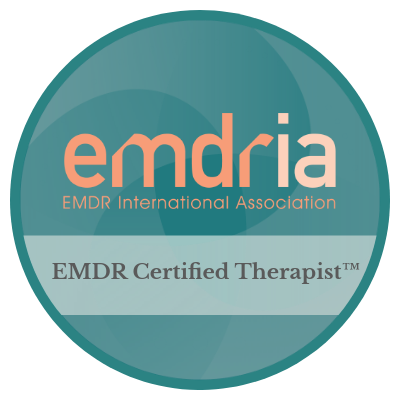1. History and Treatment Planning
First things first- your therapist needs to understand your story. They’ll ask about what’s brought you to therapy, the challenges you’re facing, and how those issues are affecting your life. From there, they create a personalized plan that targets:
- Past events that contributed to the problem
- Present situations causing distress
- Skills and coping strategies needed for the future
2. Preparation
Building trust is key! In this phase, the therapist helps you understand how EMDR works, what to expect, and teaches relaxation techniques to help you stay grounded. The goal? Making sure you feel safe and supported throughout the process.
3. Assessment
Now, you’ll start identifying specific memories to work on. Your therapist will guide you in:
- Choosing a mental image that represents the memory
- Identifying a negative belief associated with it (e.g., “I’m not good enough”)
- Selecting a positive belief you’d rather embrace (e.g., “I am worthy”)
You’ll also rate how true the positive belief feels and how distressing the negative memory is. This helps track progress throughout therapy.
4. Desensitization
Time to get to work! This is where the “reprocessing” happens. Through guided eye movements (or sounds/taps), your therapist helps you process the memory so it becomes less distressing. As you work through it, other memories or insights may come up, which helps clear out deeper emotional layers. The goal? Reduce distress and build resilience.
5. Installation
Now that the distressing memory has lost its emotional charge, it’s time to reinforce that positive belief. Your therapist will help strengthen it so you fully believe in the new, empowering perspective.
6. Body Scan
Trauma doesn’t just live in the mind—it’s stored in the body too. In this phase, you’ll check for any lingering physical tension or discomfort linked to the memory. If there’s still some distress, your therapist will guide you through more reprocessing until your body feels at ease.
7. Closure
Each session wraps up with closure, ensuring you leave feeling stable. If you haven’t fully processed a memory yet, your therapist will help you use relaxation techniques to regain balance. You’ll also get tips on how to manage any thoughts or feelings that come up between sessions.
8. Reevaluation
Every new session starts with a check-in. How are you feeling? Has anything new surfaced? This phase ensures progress is maintained and that all past, present, and future concerns are addressed.
1. History and Treatment Planning
First things first- your therapist needs to understand your story. They’ll ask about what’s brought you to therapy, the challenges you’re facing, and how those issues are affecting your life. From there, they create a personalized plan that targets:
- Past events that contributed to the problem
- Present situations causing distress
- Skills and coping strategies needed for the future
2. Preparation
Building trust is key! In this phase, the therapist helps you understand how EMDR works, what to expect, and teaches relaxation techniques to help you stay grounded. The goal? Making sure you feel safe and supported throughout the process.
3. Assessment
Now, you’ll start identifying specific memories to work on. Your therapist will guide you in:
- Choosing a mental image that represents the memory
- Identifying a negative belief associated with it (e.g., “I’m not good enough”)
- Selecting a positive belief you’d rather embrace (e.g., “I am worthy”)
You’ll also rate how true the positive belief feels and how distressing the negative memory is. This helps track progress throughout therapy.
4. Desensitization
Time to get to work! This is where the “reprocessing” happens. Through guided eye movements (or sounds/taps), your therapist helps you process the memory so it becomes less distressing. As you work through it, other memories or insights may come up, which helps clear out deeper emotional layers. The goal? Reduce distress and build resilience.
5. Installation
Now that the distressing memory has lost its emotional charge, it’s time to reinforce that positive belief. Your therapist will help strengthen it so you fully believe in the new, empowering perspective.
6. Body Scan
Trauma doesn’t just live in the mind—it’s stored in the body too. In this phase, you’ll check for any lingering physical tension or discomfort linked to the memory. If there’s still some distress, your therapist will guide you through more reprocessing until your body feels at ease.
7. Closure
Each session wraps up with closure, ensuring you leave feeling stable. If you haven’t fully processed a memory yet, your therapist will help you use relaxation techniques to regain balance. You’ll also get tips on how to manage any thoughts or feelings that come up between sessions.
8. Reevaluation
Every new session starts with a check-in. How are you feeling? Has anything new surfaced? This phase ensures progress is maintained and that all past, present, and future concerns are addressed.
EMDR isn’t just about revisiting the past—it’s about reshaping the way you see yourself and your future. By systematically working through these eight phases, you can process painful experiences, reduce distress, and build a more positive, empowered mindset.
If you’re considering EMDR, know that it’s a well-researched, effective therapy that has helped many people move forward. And you don’t have to go through it alone—your therapist is there to guide and support you every step of the way.


